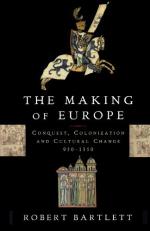|
This section contains 776 words (approx. 3 pages at 300 words per page) |

|
Motherhood. For centuries, giving birth to a child and caring for a child were different activities. Parents frequently sent their children out to wet nurses, and wives were often preoccupied with other activities that were considered more important to the household economy than caring for the children. By the nineteenth century, however, child rearing appears to have become the major focus for a married woman. In the eighteenth and nineteenth centuries, only the wealthiest families employed nurses or governesses. The domestic ideal of the middle classes was a mother caring for her children in her home. If the family were wealthy enough, a servant or two might be hired for domestic chores, but the task of raising the children was linked to the mother. Enlightenment philosophers such as Jean-Jacques Rousseau (1712-1778) helped to form this concept of the mother's...
|
This section contains 776 words (approx. 3 pages at 300 words per page) |

|




